The South Pacific idyll that became Robert Louis Stevenson’s Treasure Island
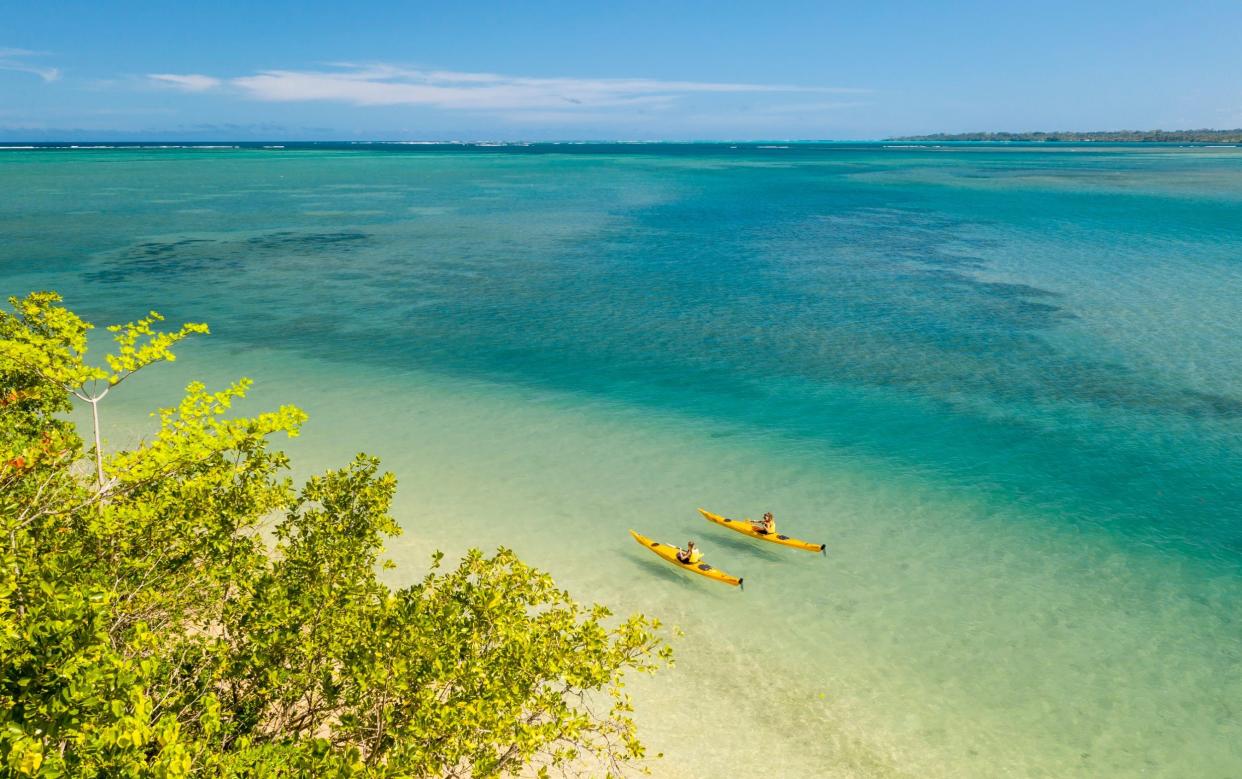
It was as a simple sketch that Treasure Island first took shape in Robert Louis Stevenson’s mind. In Scotland, in the summer of 1881, he drew an imaginary, romantic island. This would become the setting for his children’s tale of pirates, mutinies and buried treasure. It was not, though, until seven years later that he discovered his own treasured island, one that he would fall in love with and make his home until his death in 1894.
The main island of Samoa is Upolu – there are nine others, all but one of them tiny and several uninhabited. It was on Upolu that Stevenson built his colonial-style villa, Vailima, complete with two Scottish baronial fireplaces – though, for obvious reasons, these were never lit. Sitting just below the Equator in the heart of the South Pacific, this is a tropical climate, the volcanic peaks covered in recklessly abundant vegetation. (Spare a thought, then, for Stevenson and his family, buttoned up in their Victorian attire.)
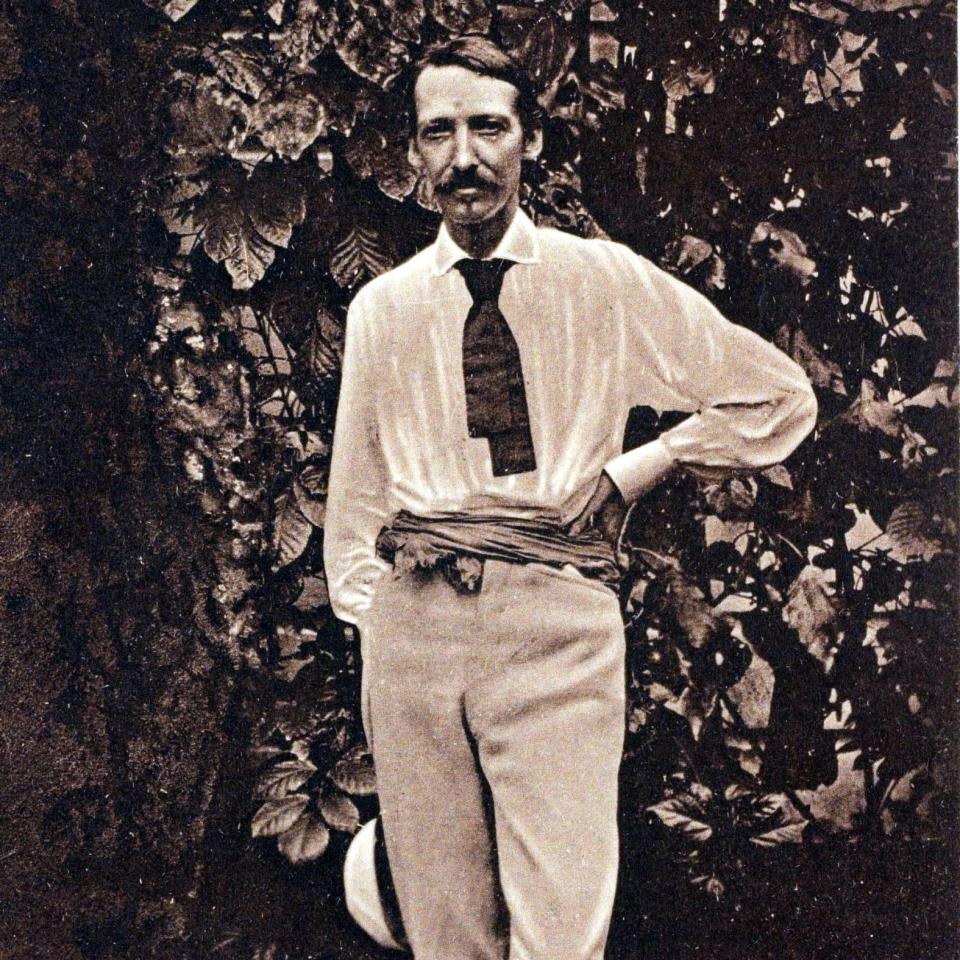
Now as then, it is a land full of natural wonders. The rainforest drops down to a coastline ringed with pearly white beaches and turquoise waters where turtles swim alongside you just off the coast. In the mountains, waterfalls create natural pools for bathing. You can swim in the azure waters of the To-Sua Ocean Trench, accessed by a climb down a 30m ladder and, from there, through caves to the sea.
On the second island of Savai’i, there’s a great roar as blowholes force thousands of litres of seawater spectacularly skywards. (Occasionally, local children put coconuts on top for an extra-explosive effect.) And the nearby lava fields are the dark remains of the floe that followed the 1905 eruption of Mt Matavanu. The molten lava engulfed five villages as it made its way to the coast – a roofless church still stands, though the lava surged through and around it. Amazingly, everyone survived, the locals escaping into the sea using coconuts as makeshift life jackets.
Samoans seem to take most things in their stride. Life is quiet, there is little crime, the roads are empty, everyone goes to church (“Have a blessed day” is a common form of farewell, with absolutely no Handmaid overtones). Village life is central – and it is the village where everything is decided, from permission to build a house to punishment for misdemeanours. The meetings take place in fales, which stand on stilts with poles supporting their thatched roofs – there are no walls. Until a decade or so ago, all Samoan houses were like this, but gradually walls have become more common – and now they are painted in Technicolor hues, surrounded by riotously colourful gardens and the neatest of lawns. I’d swear that, after the birdsong, strimmers are the most common sound here. This is the fa’a Samoa – the Samoan way, a culture that has lasted 3,000 years and is still going strong.
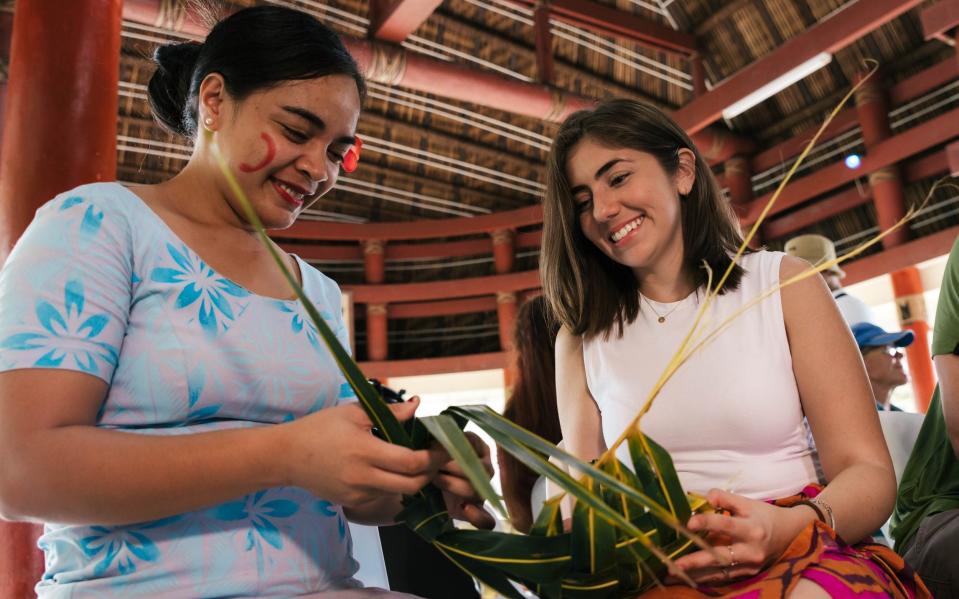
You can get a glimpse of the fa’a Samoa at the capital Apia’s Cultural Village, where you learn how to weave a plate from leaves (on which you’ll later eat lunch cooked in an umu, an underground oven), meet the woodcarvers, enjoy the singers and dancers and – surely, one of the most unlikely of entertainments – witness traditional tattooing. A traditional tatau is an obligation for Samoans and gravely respected as a rite of passage and a demonstration of inner strength. For men, it is a dense pattern that completely covers the body from the waist to the knee. Women get off a tad more lightly as theirs run only from the knee to the upper thigh. Both are executed in the traditional way with a needle tapped by a block of wood and, judging by the wincing, that respect is hard-earned.
Apia may be the capital but, even so, really just a small town (the population is around 35,000). Beyond its limits, there are only villages and that beautiful coastline, where most hotels can be found. Samoa is not, though, a place where you’ll find anything approaching mass tourism, and the lodgings are very much local affairs. If you want lots of entertainment – or indeed late nights – Samoa is probably not the place for you.

Most hotels here are small and Samoan owned and run, favouring the traditional Samoan oval or round fale design, with public spaces open to enjoy the constant cooling effects of the Trade Winds. This doesn’t mean you don’t get creature comforts – you’ll find pools, spas and wonderful restaurants at Le Lagoto (meaning “sunset” as it’s always sensational here) on Savai’i or Sinalei (pronounced “sing-a-lay”) with its overwater restaurant on Upolu. You won’t be disappointed with the food either. Samoa has an abundance of delicious dishes, though perhaps the most typical (and utterly addictive) is Oka I’a, fresh tuna marinated in lemon or lime juice, mixed with some onion, tomato and cucumber and drenched in the milk of a coconut just picked from the tree.
It would be wrong, perhaps, to suggest that nothing happens here. One of the big occasions is the Sunday service where everyone dresses in white and sings their hearts out in four-part harmonies that fill the coral limestone churches. There are churches everywhere in Samoa and, even in the smallest villages, they are as big as cathedrals. If you’re really lucky, you might be asked to join the traditional family lunch that follows, the Toanai.
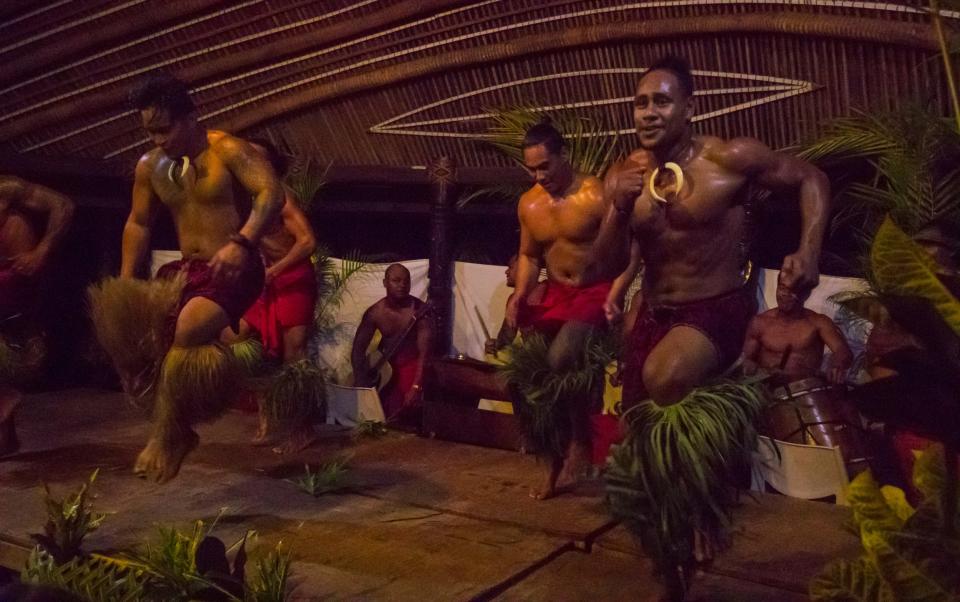
But perhaps the most exciting entertainment on Samoa is the dancing. The men are warriors, as in all Polynesian cultures, and have a particularly impressive fire dance, while the women’s dances tell lyrical stories of myths, the sea and love. The dancing is known as fiafia, and it says much about the Samoans that the word also means “happy”.
To really get under the skin of the fa’a Samoa, you could stay at a family-run beach fale. It’s perhaps not what most of us would immediately picture for a long-haul holiday but you wake up on a mile of shining sand, steps away from a blue lagoon, gorgeous coral and a sea bed scattered with bright blue starfish. Your fale on the beach will have a thatched roof, a mosquito net, a mattress on the floor and that’s about it. There’s a bathroom (usually across the road where the family lives) and, occasionally there are actual walls, though more generally there are woven mats you can let down for shelter from the weather or – a concept unknown in Samoa – privacy. The first time I stayed in one, many years ago, the entire family would visit in the evening just to make sure I wasn’t feeling lonely.
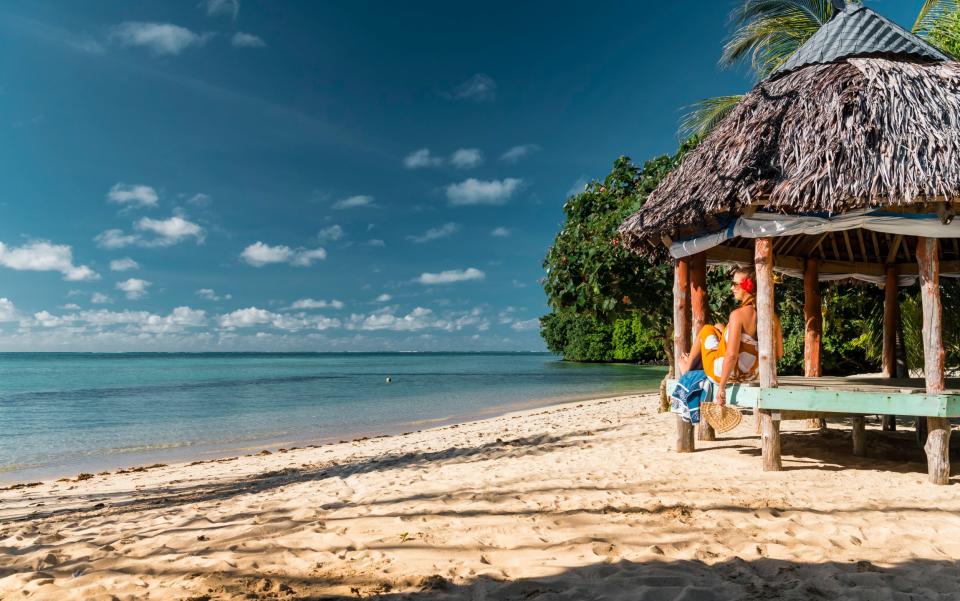
No surprise then, that it was not just Samoa’s beauty which so endeared it to Stevenson, but the warmth of the locals too. Something of a champion for Samoans’ rights (the locals were treated badly by the German traders who had made it their base, and it would become a German colony in 1900), he was much beloved. He died at Vailima in 1894 and, at his behest, was buried there at the top of Mt Vaea, overlooking his home. You can still visit today. It’s a steep walk through dense rainforest and overshadowed by a magnificent banyan tree. As a sign of respect, the locals passed his coffin from hand to hand up the hill to the final resting place for Robert Louis Stevenson – or, as the Samoans called him, Tusitala: “the teller of tales”.
Essentials
Book a tour
DialAFlight (dialaflight.com) has a 10-night trip to Samoa from £2,995pp, based on two adults sharing. It includes four nights at the Sinalei Reef Resort, three nights at Le Lagoto Beach Resort, three nights at Return to Paradise Resort, all transfers, and international flights (via Fiji).
Do it yourself
DialAFlight offers daily flights from London to Nadi (Fiji). Go via Los Angeles (with United Airlines and Fiji Airways) from £1,951 return, or via Singapore (with Singapore Airlines and Fiji Airways) from £1,349 return.
Fiji Airways (fijiairways.com) flies from Fiji to Samoa from £400.
Sinalei Reef Resort (00 685 25191; sinalei.com) has villas (sleeping two) from £78 per night, including breakfast.

